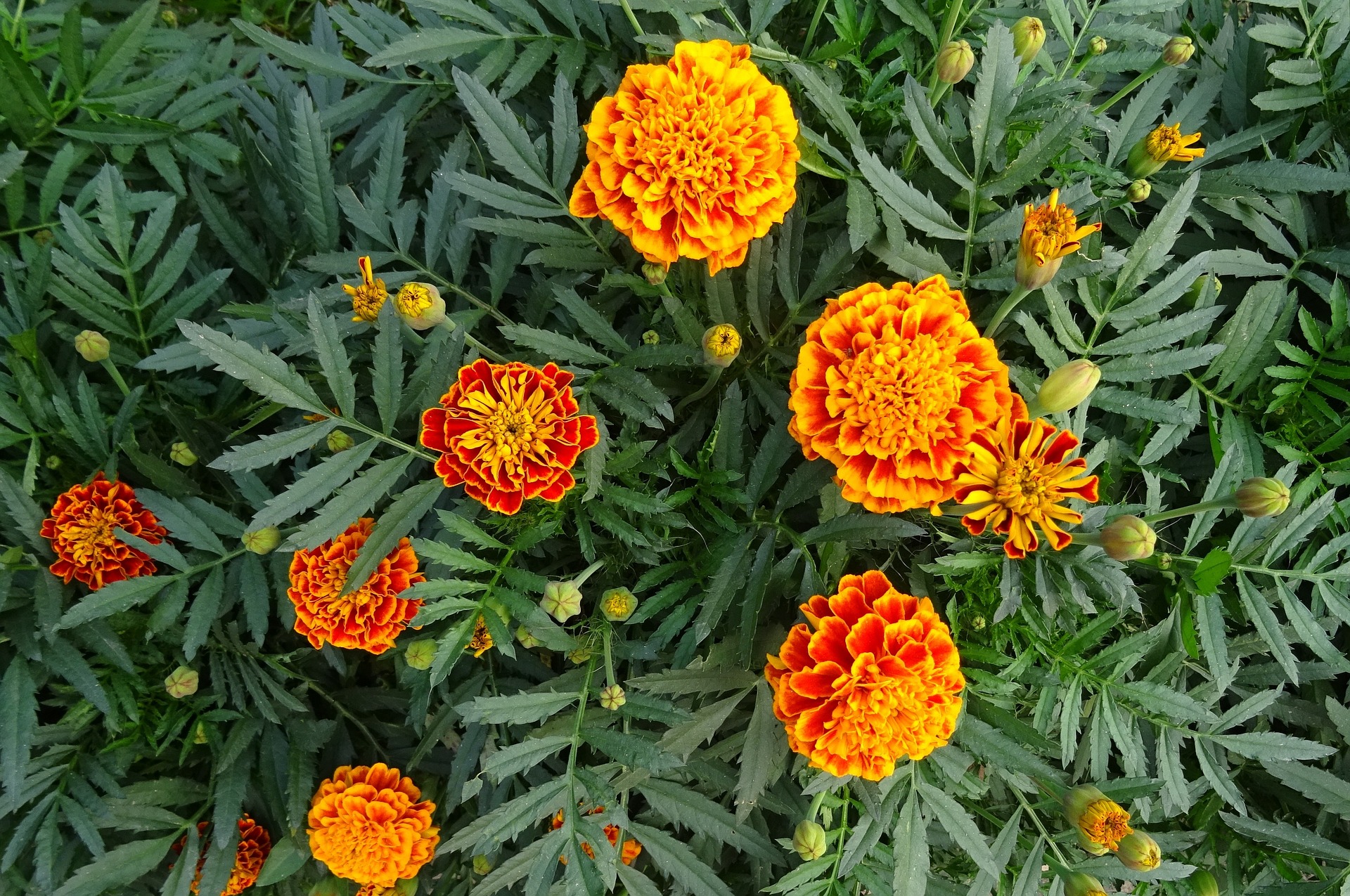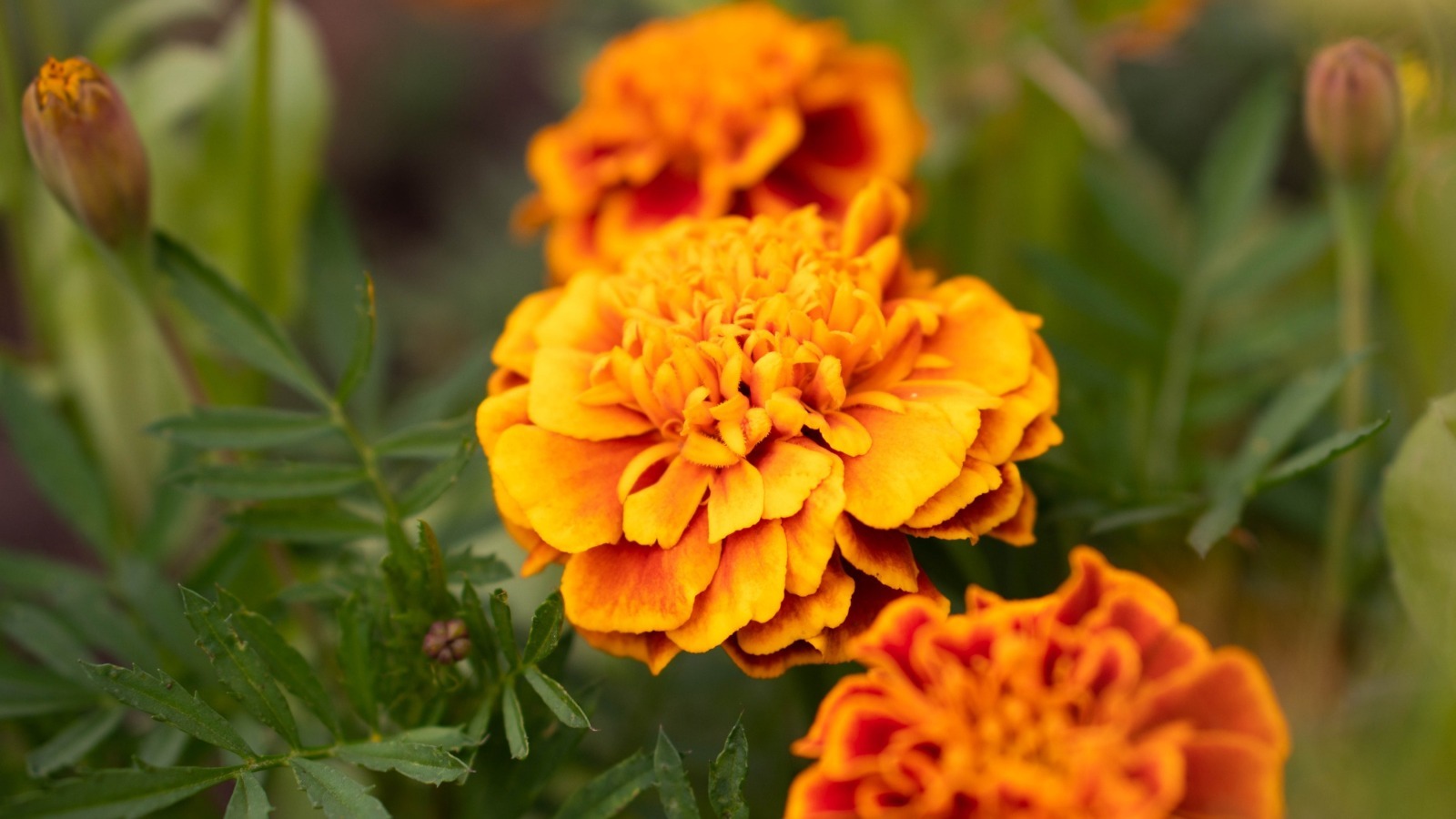Choosing the Right Marigold Variety for Your Garden
When it comes to growing marigolds, selecting the right variety is crucial for optimal growth and blooming. With over 50 species of marigolds, each with its unique characteristics, choosing the best one for your garden can be overwhelming. To help you make an informed decision, let’s explore the three most popular types of marigolds: African, French, and Signet marigolds. African marigolds, also known as American marigolds, are the tallest and most vigorous of the three, growing up to 3 feet in height. They are ideal for creating a dramatic pop of color in your garden, with large, bright yellow and orange blooms. French marigolds, on the other hand, are more compact, growing up to 1 foot in height, and produce smaller, more delicate flowers in a range of colors, including yellow, orange, and red. Signet marigolds are the smallest of the three, growing up to 6 inches in height, and produce tiny, delicate flowers in a range of colors. When deciding which variety to grow, consider your climate, garden type, and personal preferences. If you live in a hot and dry climate, African marigolds may be the best choice, as they are more drought-tolerant. If you have a smaller garden or prefer a more compact growth habit, French or Signet marigolds may be a better fit. By selecting the right marigold variety for your garden, you’ll be well on your way to growing vibrant, thriving marigolds that will add beauty and charm to your outdoor space. Remember, to successfully grow marigolds, it’s essential to understand how do you grow marigolds, including choosing the right variety, preparing the soil, and providing the right conditions for optimal growth.
Preparing the Soil for Optimal Marigold Growth
Before sowing marigold seeds, it’s essential to prepare the soil to provide the best possible start for your marigolds. Soil preparation is a critical step in growing healthy and thriving marigolds, as it directly affects the plant’s ability to absorb nutrients and water. To begin, test your soil pH to determine if it’s acidic, alkaline, or neutral. Marigolds prefer a slightly acidic to neutral soil pH, ranging from 6.0 to 7.0. If your soil pH is outside this range, add lime to raise the pH or sulfur to lower it. Next, add organic matter such as compost or well-rotted manure to improve soil structure and fertility. This will help retain moisture, suppress weeds, and provide nutrients for your marigolds. Remove any weeds and debris from the soil, as they can compete with your marigolds for water and nutrients. Till the soil to a depth of 8-10 inches to loosen and aerate it, making it easier for roots to grow. By preparing the soil properly, you’ll be well on your way to growing vibrant marigolds that will thrive in their new environment. Remember, understanding how do you grow marigolds involves more than just sowing seeds; it requires careful attention to soil preparation and other critical factors.
How to Sow Marigold Seeds for Successful Germination
Sowing marigold seeds is a straightforward process that requires attention to detail to ensure successful germination. To begin, choose a location with full sun and well-draining soil. Marigolds thrive in areas that receive direct sunlight for at least 6 hours a day. If your soil is heavy clay or sandy, mix in some organic matter to improve its structure. Next, prepare the soil by loosening it to a depth of 8-10 inches. Sow marigold seeds 1/4 inch deep and 6-12 inches apart, depending on the variety. Cover the seeds with a thin layer of soil and water gently but thoroughly. Watering is crucial at this stage, as it helps to settle the soil and provide enough moisture for germination. Keep the soil consistently moist during the first few weeks after sowing. It’s essential to sow marigold seeds at the right time. In most regions, the ideal time to sow marigolds is in early spring, after the last frost. In warmer climates, you can sow marigolds in the fall for a winter bloom. Understanding how do you grow marigolds involves paying attention to the specific needs of your plants, including the timing of sowing. By following these steps, you’ll be well on your way to growing vibrant marigolds that will thrive in their new environment.
Providing the Right Conditions for Marigold Growth
Marigolds are adaptable to various growing conditions, but they still require specific conditions to thrive. One of the most critical factors is sunlight. Marigolds need full sun to partial shade, depending on the variety. African marigolds, for instance, require at least 6 hours of direct sunlight, while French marigolds can tolerate partial shade. Understanding how do you grow marigolds involves recognizing the specific sunlight requirements of your marigold variety. Temperature is another essential factor in marigold growth. Most marigold varieties prefer warm temperatures between 65°F and 85°F (18°C and 30°C). They can tolerate some frost but may be damaged or killed by extreme temperatures. When growing marigolds in areas with harsh winters, it’s essential to provide protection or bring them indoors during the cold season. Watering is also crucial for marigold growth. Marigolds need consistent moisture, especially when they’re producing flowers. However, they don’t like to be waterlogged, which can lead to root rot and other problems. Water your marigolds deeply once or twice a week, depending on the weather. Avoid getting water on the leaves or flowers to prevent fungal diseases. By providing the right conditions, including sunlight, temperature, and watering, you’ll be able to grow vibrant and healthy marigolds that will thrive in their environment.
Fertilizing and Pruning Marigolds for Maximum Blooms
Fertilizing and pruning are essential steps in promoting healthy growth and maximum blooms in marigolds. When it comes to fertilizing, marigolds benefit from a balanced fertilizer that provides equal amounts of nitrogen, phosphorus, and potassium. A 10-10-10 fertilizer is a good starting point, but you can also use compost or well-rotted manure to provide nutrients. Apply the fertilizer according to the manufacturer’s instructions, usually once a month. Understanding how do you grow marigolds involves recognizing the importance of fertilization in promoting healthy growth and blooming. Pruning is another crucial step in promoting maximum blooms in marigolds. Pruning helps to encourage bushy growth, increase flower production, and prevent the plant from becoming leggy. To prune marigolds, remove any weak or spindly growth, and trim back the tips of the stems to encourage branching. You can also deadhead the flowers to encourage the plant to produce more blooms. Pruning techniques can vary depending on the marigold variety, so it’s essential to research the specific pruning needs of your plants. By fertilizing and pruning your marigolds regularly, you’ll be able to promote healthy growth and maximum blooms, making your marigolds a vibrant addition to your garden.
Pest and Disease Management for Healthy Marigolds
Marigolds are generally easy to care for, but they can be susceptible to certain pests and diseases. Understanding how to manage these issues is crucial in growing healthy and vibrant marigolds. One of the most common pests that affect marigolds are aphids, which can cause curled or distorted leaves. To control aphids, spray the plants with a strong stream of water or use insecticidal soap. Whiteflies are another common pest that can cause yellowing leaves and stunted growth. To control whiteflies, use sticky traps or insecticidal soap. Powdery mildew is a common disease that affects marigolds, causing a white, powdery substance to form on the leaves. To prevent powdery mildew, ensure good air circulation around the plants and avoid overhead watering. If the disease does occur, treat the plants with a fungicide. Other diseases that can affect marigolds include root rot and leaf spot, which can be caused by overwatering and poor soil drainage. To prevent these diseases, ensure the soil drains well and avoid overwatering. By understanding how do you grow marigolds and taking steps to prevent and control pests and diseases, you’ll be able to grow healthy and vibrant marigolds that will thrive in their environment. Regularly inspecting your plants and taking prompt action when issues arise will help to prevent the spread of pests and diseases and ensure a successful harvest.
Supporting Marigold Stems for Better Growth
Marigolds can grow quite tall, and their stems can become weak and prone to breakage, especially in windy or rainy weather. Supporting marigold stems is essential to promote upright growth and prevent stem breakage. One way to support marigold stems is by using stakes. Simply drive a stake into the soil near the base of the plant and tie the stem to the stake using a soft material like twine or cloth. This will provide the necessary support to keep the stem upright and prevent it from breaking. Another way to support marigold stems is by using trellises or cages. These provide a framework for the stems to grow up and through, keeping them upright and secure. When using trellises or cages, make sure to place them in the soil at the time of planting, as this will give the stems something to grow up and through as they develop. By supporting marigold stems, you’ll be able to promote healthy growth and prevent stem breakage, which is essential when learning how do you grow marigolds. This will also encourage the plant to produce more blooms, making it a vibrant addition to your garden. Regularly inspecting your plants and providing support when necessary will help to ensure a successful harvest and a beautiful display of marigold flowers.
Tips for Harvesting and Preserving Marigold Flowers
Once your marigolds have bloomed, it’s time to harvest and preserve the flowers. Harvesting marigold flowers is a simple process that requires some basic knowledge of when and how to pick the flowers. The best time to harvest marigold flowers is in the morning, after the dew has dried but before the heat of the day. Simply snip off the flowers at the base of the stem, leaving a small portion of stem attached to the plant. This will encourage the plant to produce more blooms. To preserve marigold flowers, there are several methods you can use. One popular method is to dry the flowers. This can be done by tying the stems together and hanging them upside down in a warm, dry place. Once the flowers are dry, you can use them in crafts and arrangements. Another method is to press the flowers. This can be done by placing the flowers between sheets of paper towels and weighing them down with a heavy object. Once the flowers are pressed, you can use them to create beautiful, delicate designs. Marigold petals can also be used in potpourri and other craft projects. Simply dry the petals and mix them with other dried flowers and herbs to create a beautiful, fragrant mixture. By learning how to harvest and preserve marigold flowers, you’ll be able to enjoy the beauty of these vibrant flowers all year round. Whether you’re using them in crafts, arrangements, or simply as a decoration, marigold flowers are a wonderful addition to any garden or home. By following these tips and learning how do you grow marigolds, you’ll be able to enjoy the beauty and benefits of these wonderful flowers.






:max_bytes(150000):strip_icc()/GettyImages-553241603-584db7293df78c491e6415a5-b82e14433fe84f6280dd07e497ca1584.jpg)
